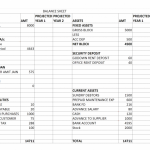However, until 2000, the lack of storage capability and low computing power prevented any progress in the field. Accordingly, governments and investors lost their interest and AI fell short of financial support and funding in 1974–1980 and again in 1987–1993. Learn why digital transformation means adopting digital-first customer, business partner and employee experiences. Guardrails to ensure ethics, regulatory compliance, transparency and explainability—so that stakeholders understand the decisions made by the financial institution—are essential in order to balance the benefits of AI with responsible and accountable use.

Automated Portfolio Building

According to a Gartner study, 80% of CFOs surveyed in 2022 expected to spend more on AI in the coming two years.2 With that investment, however, around two-thirds think their function will reach an autonomous state within six years. Yarilet Perez is an experienced multimedia journalist and fact-checker with a Master of Science in Journalism. She has worked in multiple cities covering breaking news, politics, education, and more. Algorithmic trading (aka algo trading) allows traders to execute trades more accurately and faster.
AI for Better Finance: Real-World Use Cases and Examples

Here are a few examples of companies using AI and blockchain to raise capital, manage crypto and more. Bank One implemented Darktace’s Antigena Email solution to stop impersonation and malware attacks, according to a case study. The bank saw a rapid decrease in email attacks and has since used additional Darktrace solutions across its business. https://www.simple-accounting.org/ A Vectra case study provides an overview of its work to help a prominent healthcare group prevent security attacks. Vectra’s platform identified behavior resembling an attacker probing the footprint for weaknesses and disabled the attack. Additionally, 41 percent said they wanted more personalized banking experiences and information.
What is artificial intelligence (AI)?
All of these manual activities tend to make the finance function costly, time-consuming, and slow to adapt. At the same time, many financial processes are consistent and well defined, making them ideal targets for automation with AI. The financial services sector is rapidly gaining momentum with innovations in applications of AI. According to a survey conducted by Irish-American professional services company Accenture, 75% of consumers are more likely to do business with a bank that offers personalized services.

This results in a lowered cost of equity for listed firms in the medium–long term, especially in emerging markets (Litzenberger et al. 2012). As opposed to human traders, algorithmic trading adjusts faster to information and generates higher profits around news announcements thanks to better market timing ability and rapid executions (Frino et al. 2017). To conduct a sound review of the literature on the selected topic, we resort to two well-known and extensively used approaches, namely bibliometric analysis what is a contra account & why is it important chron com and content analysis. Bibliometric analysis is a popular and rigorous method for exploring and analysing large volumes of scientific data which allows us to unpack the evolutionary nuances of a specific field whilst shedding light on the emerging areas in that field (Donthu et al. 2021). In this study, we perform bibliometric analysis using HistCite, a popular software package developed to support researchers in elaborating and visualising the results of literature searches in the Web of Science platform.
- For example, SoFi members looking for help can take advantage of 24/7 support from the company’s intelligent virtual assistant.
- For example, the banking industry still has human-based processes and is paperwork-heavy.
- At the same time, many financial processes are consistent and well defined, making them ideal targets for automation with AI.
- The findings of the aforementioned papers confirm that AI-powered classifiers are extremely accurate and easy to interpret, hence, superior to classic linear models.
AI stock frenzy resembles dot-com bubble and may explode disastrously, experts warn
Simudyne’s secure simulation software uses agent-based modeling to provide a library of code for frequently used and specialized functions. Robo-advisors are often the first step for beginning investors, and these platforms are heavily reliant on AI. While some artificial intelligence represents cutting-edge technology and the ability to understand and process language, plenty of it is much more intuitive. In investing, such as stock selection, AI allows investors to filter stocks that meet their criteria much more simply through stock screeners. These screeners apply the same intelligence as an individual would, but they can do so much more quickly, efficiently, and accurately than a human. Any investor, even a beginner, would benefit from these powerful and easy-to-use stock screeners, as well as other AI investing tools.
Cryptocurrencies, and especially Bitcoins, are extensively used in financial portfolios. Hence, new AI approaches should be developed in order to optimise cryptocurrency portfolios (Burggraf 2021). Although algorithms and AI advisors are gaining ground, human traders still dominate the cryptocurrency market (Petukhina et al. 2021).
Additionally, the Hierarchical Risk Parity (HRP) approach, an asset allocation method based on machine learning, represents a powerful risk management tool able to manage the high volatility characterising Bitcoin prices, thereby helping cryptocurrency investors (Burggraf 2021). In contradiction with past research, a text mining study argues that the most important risk factors in banking are non-financial, i.e. regulation, strategy and management operation. However, the findings from text analysis are limited to what is disclosed in the papers (Wei et al. 2019).
For this reason, substantial arbitrage opportunities are available in the Bitcoin market, especially for USD–CNY and EUR–CNY currency pairs (Pichl and Kaizoji 2017). Likewise, the feed-forward neural network effectively approximates the daily logarithmic returns of BTCUSD and the shape of their distribution (Pichl and Kaizoji 2017). We can notice that, although it primarily deals with banking and financial services, the extant research has addressed the topic in a vast array of industries.
However, the expectation of immediate and round-the-clock assistance makes relying solely on live agents impractical and costly. Fortunately, recent breakthroughs in conversational AI, such as those demonstrated by ChatGPT, have resulted in chatbots that more closely approximate human responses. Powered by generative large language models, these chatbots excel at understanding intent and can redirect customers to human representatives when needed. Automation using AI is essential for the financial services industry to meet customer demands for better personalization and enhanced features while reducing costs.
Machine learning models can yield more accurate predictions, allowing financial services firms to manage risk more effectively. Hedge funds and other trading operations utilize artificial intelligence at a very high level to, as an example, gain the slightest advantages in fast-moving markets. But artificial intelligence is also widely used in finance and investing because of its ability to process and analyze information from very large data sets.
We will discuss a variety of ways any investor can incorporate artificial intelligence into their investing. Sentiment analysis builds on text-based data from social networks and news to identify investor sentiment and use it as a predictor of asset prices. Forthcoming research may analyse the effect of investor sentiment on specific sectors (Houlihan and Creamer 2021), as well as the impact of diverse types of news on financial markets (Heston and Sinha 2017). In this respect, Xu and Zhao (2022) propose a deeper analysis of how social networks’ sentiment affects individual stock returns. They also believe that the activity of financial influencers, such as financial analysts or investment advisors, potentially affects market returns and needs to be considered in financial forecasts or portfolio management.
In this context, AI makes fraud detection faster, more reliable, and more efficient in financial services. Furthermore, they can identify patterns and detect anomalies that may indicate fraudulent activities. Artificial intelligence (AI) in finance is the use of technology, including advanced algorithms and machine learning (ML), to analyze data, automate tasks and improve decision-making in the financial services industry. Kavout uses machine learning and quantitative analysis to process huge sets of unstructured data and identify real-time patterns in financial markets. The K Score analyzes massive amounts of data, such as SEC filings and price patterns, then condenses the information into a numerical rank for stocks. The company applies advanced analytics and AI technologies to develop products and data-driven tools that can optimize the experience of credit trading.
These automated wealth management platforms use AI to tailor portfolios to each customer’s disposable income, risk tolerance, and financial goals. All the investor needs to do is complete an initial survey to provide this information and deposit the money each month – the robo-advisor picks and purchases the assets and re-balances the portfolio as needed to help the customer meet their targets. AI in finance is rapidly transforming how banks and other financial institutions perform investment research, engage with customers, and manage fraud. While traditional banking institutions are interested in incorporating new technologies, fintechs are adopting this technology more quickly as they try to catch up with larger institutions.
Scienaptic AI provides several financial-based services, including a credit underwriting platform that gives banks and credit institutions more transparency while cutting losses. Its underwriting platform uses non-tradeline data, https://www.business-accounting.net/remote-bookkeeping-services-remote-bookkeeping/ adaptive AI models and records that are refreshed every three months to create predictive intelligence for credit decisions. Ocrolus offers document processing software that combines machine learning with human verification.



